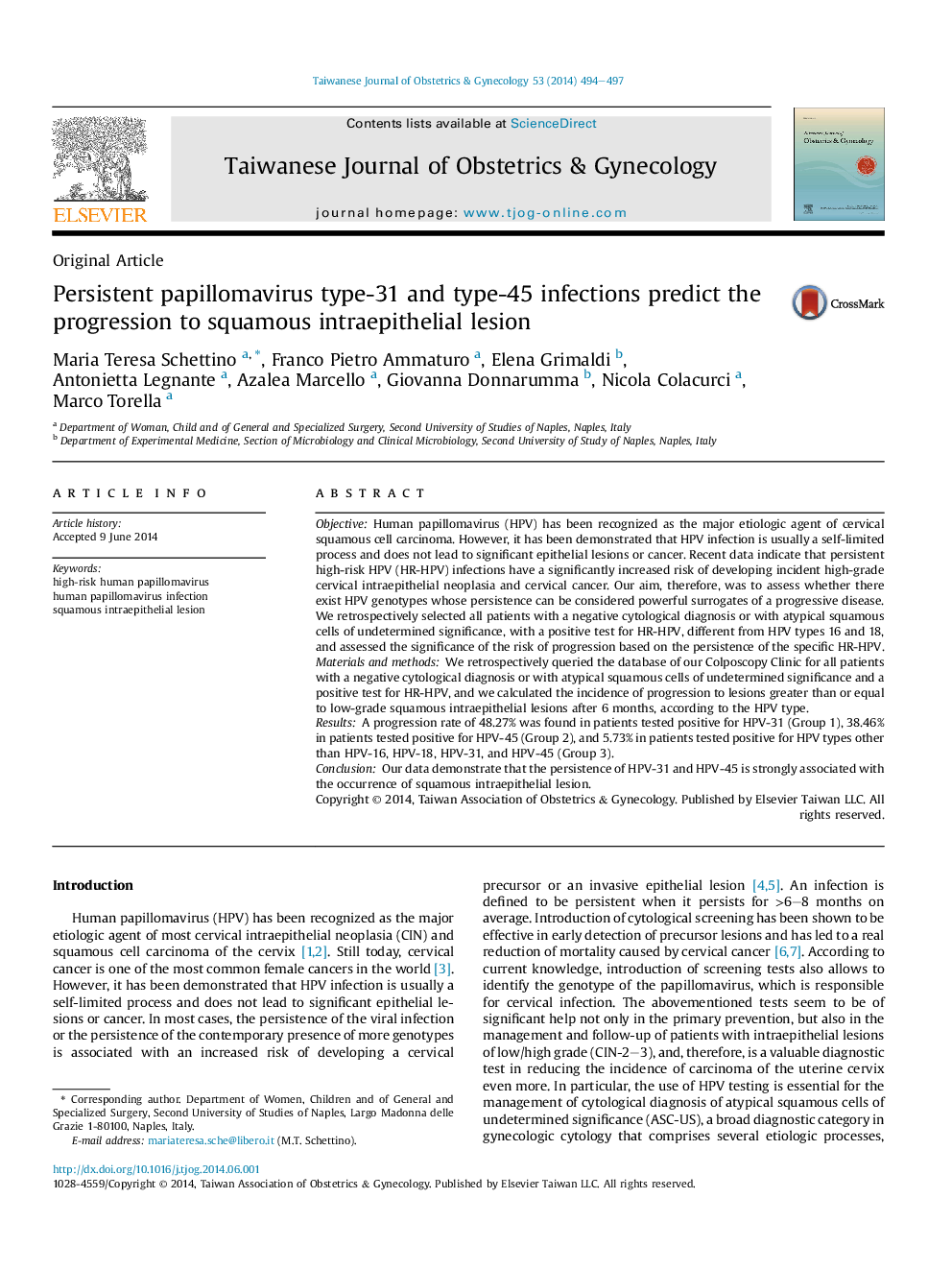| Article ID | Journal | Published Year | Pages | File Type |
|---|---|---|---|---|
| 3974945 | Taiwanese Journal of Obstetrics and Gynecology | 2014 | 4 Pages |
ObjectiveHuman papillomavirus (HPV) has been recognized as the major etiologic agent of cervical squamous cell carcinoma. However, it has been demonstrated that HPV infection is usually a self-limited process and does not lead to significant epithelial lesions or cancer. Recent data indicate that persistent high-risk HPV (HR-HPV) infections have a significantly increased risk of developing incident high-grade cervical intraepithelial neoplasia and cervical cancer. Our aim, therefore, was to assess whether there exist HPV genotypes whose persistence can be considered powerful surrogates of a progressive disease. We retrospectively selected all patients with a negative cytological diagnosis or with atypical squamous cells of undetermined significance, with a positive test for HR-HPV, different from HPV types 16 and 18, and assessed the significance of the risk of progression based on the persistence of the specific HR-HPV.Materials and methodsWe retrospectively queried the database of our Colposcopy Clinic for all patients with a negative cytological diagnosis or with atypical squamous cells of undetermined significance and a positive test for HR-HPV, and we calculated the incidence of progression to lesions greater than or equal to low-grade squamous intraepithelial lesions after 6 months, according to the HPV type.ResultsA progression rate of 48.27% was found in patients tested positive for HPV-31 (Group 1), 38.46% in patients tested positive for HPV-45 (Group 2), and 5.73% in patients tested positive for HPV types other than HPV-16, HPV-18, HPV-31, and HPV-45 (Group 3).ConclusionOur data demonstrate that the persistence of HPV-31 and HPV-45 is strongly associated with the occurrence of squamous intraepithelial lesion.
